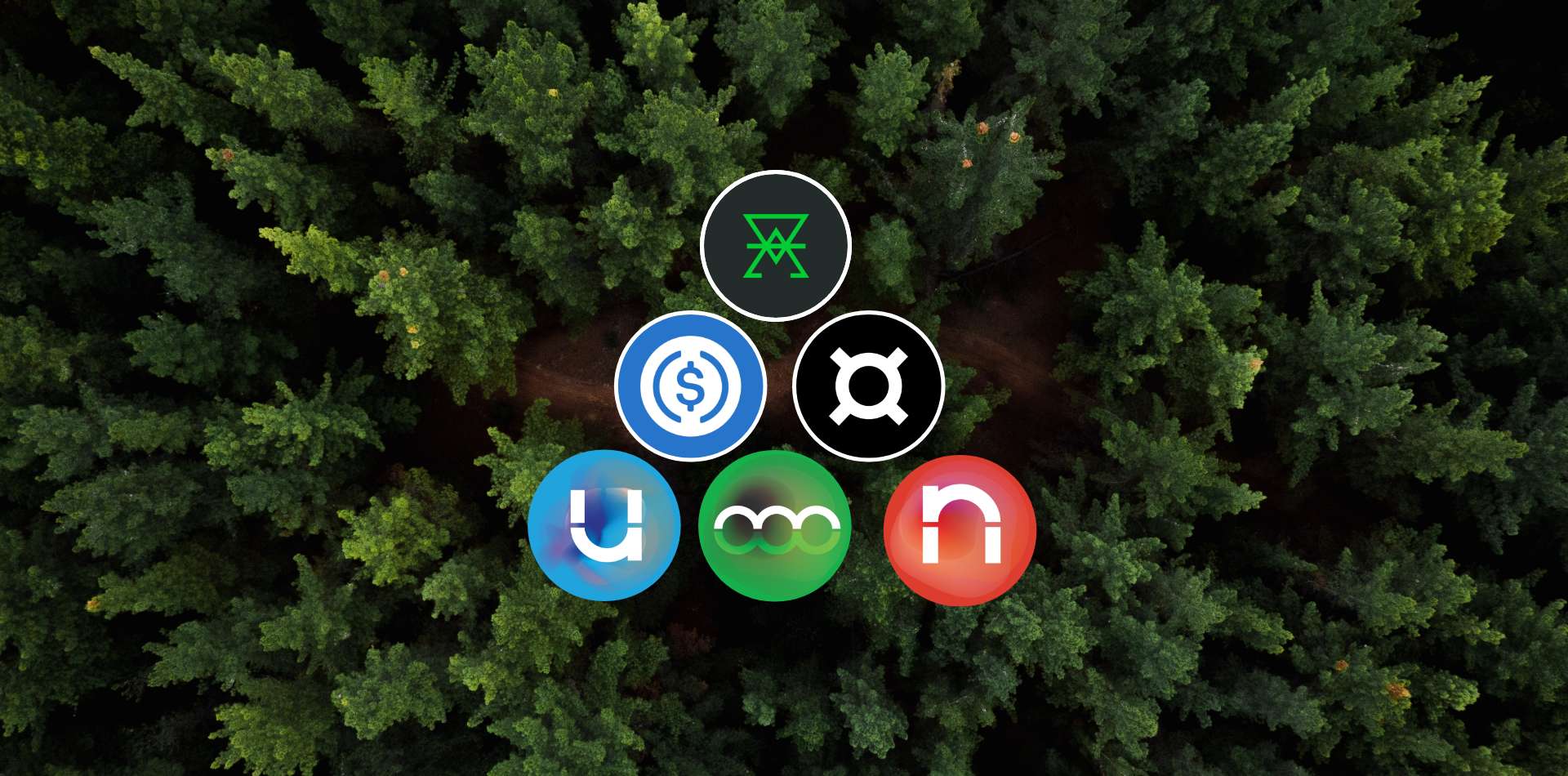
Bridge carbon, stake and provide liquidity: https://www.c3.app/
Follow-us on Twitter: https://twitter.com/c3_app_
Join our community: https://discord.gg/M6TbQBNHqk
C3 aims to maximize the bandwidth between the legacy carbon space and the emerging Regenerative Finance (ReFi) ecosystem. We achieve this by leveraging key building blocks of DeFi and integrating them with our carbon bridge infrastructure.
Our articles discussing the role and impact of KlimaDAO describe how, although we commend what has been achieved so far, there are constraints on the protocol’s growth because it has had to do a lot of heavy lifting alone, including building an ecosystem from the ground up, and taking on risks to establish the KLIMA token as the primary liquidity pair for tokenized carbon.
In addition, whilst KlimaDAO and its partners have demonstrated how blockchain and DeFi can be deployed to solve some of the critical problems on the Voluntary Carbon Markets’ demand side, significantly more work is still required to unleash the full scale of the market to meaningfully close the gap on emissions.
C3 is an application that integrates some of the most innovative DeFi mechanics with the on-chain carbon market. In this article we introduce some of the key mechanics underlying our system.
A DeFi-enabled Tokenized Carbon Application
Firstly, the API-powered automation of C3’s carbon bridge removes friction for those looking to move carbon credits onto Polygon. If you hold verified carbon offsets from a reputable registry (currently Verra or Gold Standard), you now no longer need to wait for manual verification by a human — you can bridge in minutes at https://bridge.c3.app/. This makes it the most efficient carbon offset bridging solution available.
However, it is by building this efficient bridging system on top of best-in-class DeFi tokenomics, that C3 unlocks the true potential to scale the on-chain carbon market. Under the hood, C3 is more than just a carbon bridge.
To fully understand C3, we should first understand the critical role that Curve has played in establishing liquidity and volume within DeFi. Curve is an Automated Market Maker, which functions as a platform for Liquidity Providers to accrue rewards (i.e. yield farm) with a reduced risk of impermanent loss, initially focused on stablecoin assets only.
Whilst the volatility and slippage of AMMs do present opportunities for users who try to profit from entering and exiting an LP position at the right time, by trading off the high risk (and high reward) aspect of volatility, Curve attracts LPs who want long-term exposure to the growth of DeFi with a greater level of composability than afforded by traditional AMMs.
This means that it is primarily for those who want to use their LP positions to also be able to earn rewards elsewhere in the DeFi ecosystem. Curve achieves this by having concentrated liquidity at the ideal price between two assets — in the case of stablecoins, a one-to-one “stableswap”. It does also go beyond stablecoins, and allows for like-assets, such as ETH and sETH (staked ETH on lido). So, by allowing imbalanced pools to exist, Curve has been able to introduce more volatile pooled assets such as stETH and rETH, or renBTC and wBTC.
One of Curve’s key innovations that has inspired C3 is the introduction of incentives and decentralized protocol governance. The introduction of Curve’s CRV token in August 2020 — which can either be acquired on the open market, or earned by providing liquidity — led to significant activity within the Curve pools. The layering of incentives on top of LP fees immediately led to a jump in Curve pool adoption — with the Total Value Locked at the beginning of August sitting at around $90 million, before jumping to roughly $400 million by the end of the month, and surpassing $1 billion by the end of the year (peaking at around $24 billion in early 2022).
Any user with a minimum number of CRV tokens may vote lock their CRV tokens for a fixed period of time. The vote locking creates a token called veCRV (or Vote-Escrowed CRV). Holders of veCRV are able to propose updates to the Curve protocol, which can include changing fees, defining where fees are allocated, creating new liquidity pools, and adjusting reward rates. In addition, by locking up CRV rewards for longer periods, users can increase their veCRV voting power and boost their rewards by up to 2.5x.
Vote locking clearly benefits the user by increasing their ability to vote and accrue rewards; it also creates competition between holders of veCRV who want to maximize their rewards and governance ownership — they must lock for a minimum of 1 year, and they may be inclined to lock up for the maximum lock period of 4 years. The incentivisation of long-term locking helps build stability into the CRV protocol as veCRV tokens cannot be redeemed until the vote locked period ends, limiting the circulating supply of CRV on the market.
The Curve Wars
The power of layered incentives and distributed governance rights has led to yield farmers and entire protocols attempting to acquire as many CRV tokens as possible and subsequently locking them up to maximize their benefits. This competition within DeFi led to the emergence of the now infamous Curve Wars — DeFi’s fight for liquidity (check out this Bankless episode for a deepdive on the underlying mechanics and how it played out).
Although the term ‘Curve Wars’ may have negative connotations, this competition within DeFi led to new innovations, increasingly deep liquidity and a thriving ecosystem for market participants. For example, Convex Finance, launched in May 2021 as a DeFi protocol built on Curve which allowed locked CVX (Convex’s native governance token) to vote on Convex governance decisions directly within Curve pools. Essentially, this allowed CVX holders to influence the incentive allocation of Curve pools via their CVX. The interoperability of CVX with CRV essentially led Convex to become DeFi’s second largest project by solving revenue and liquidity problems of Curve staked CRVs; simplifying Curve’s operational processes; and moving Curve-focussed governance rights to Convex and simultaneously influencing the incentive allocation of the Curve pool by using CVX.
So, what’s the relevance to C3?
C3 sees a future where ReFi itself becomes integrated, with composability between protocols and assets a key enabler of this. As a bridge we enable the flow of new carbon assets onto Polygon into our pools and ensure there is a sufficient supply of tokenized carbon to be utilized by builders. However, with C3’s own native C3 token itself being distributed to LPers and stakers within pools (and will soon be distributed to bridgers themselves), we intend to distribute our governance, and give our users the opportunity to accrue rewards through interacting with ReFi.
The C3 token is a fork of Frax’s FXS token (which itself is a fork of CRV) — this means the same vote-escrow mechanics are embedded into the C3 protocol. By acquiring veC3 our users can achieve 2x boosts on staking and providing liquidity, in addition they can vote on carbon gauge weights to increase the amount allocated to a carbon asset.
It is really our carbon gauges that sit at the heart of the protocol — these determine how the bridging, staking and LP rewards are distributed to users. What this means in practice is that veC3 holders will begin to determine how much liquidity and bandwidth is allocated to each pair, and influence the supply of carbon on the market. In terms of implications, this means that C3 positions itself to respond actively to the emerging needs of ReFi, and offer KlimaDAO support (and the opportunity to influence) the supply of on-chain carbon tonnes.
An initial demonstration on how C3 can use its incentives to both distribute its governance and provide benefits for ReFi through composability was the introduction of c3’s wsKLIMA staking gauge. By enabling wsKLIMA holders to stake on C3 and accrue rewards, it distributes the governance of C3 to KLIMA holders; KLIMA holders themselves are also responsible for the governance of KlimaDAO — C3’s primary strategic partner. One week after launch, over $1.5 million of wsKLIMA was locked in the gauge, the majority of which are for lock periods of a year. KLIMA holders are now a significant stakeholder in C3’s governance operations, and C3 will leverage this to build out its own ecosystem in symbiosis with KlimaDAO.
C3 is (3, 3) in action.
Moving forwards, there are other opportunities to leverage the DeFi tech-stack to bring solutions to the Voluntary Carbon Market. For example, Rari Capital’s Fuse can enable anyone to instantly create and deploy their own pools, with pools made in public or private depending on the creator’s preference. In future, veC3 holders could vote on which carbon pools to whitelist and allow them to interact with the ReFi ecosystem, decisions made by the community could prioritize those that offer high-impact carbon credits, or a pool from an entity that has the capacity to provide deep liquidity.
By opening up ReFi, and layering governance incentives on top of the existing system, we can maximize participation and unlock growth within the market.
ReFi itself is novel, with a limited number of live projects in the space to-date, however the early pioneers of the space have demonstrated their willingness to collaborate and scale together. C3 itself distributed 10% of its governance tokens to the KlimaDAO treasury, as did Moss.Earth.
Perhaps the analogy between DeFi protocol’s such as Curve and Convex is not directly applicable to the nature of ReFi given that ReFi has a firm dependence on bridging between legacy markets on DeFi. However, it is clear that if we want to properly leverage blockchain to close the gap on society’s most pressing issue, we will most efficiently achieve it through collaboration and composability — this is what C3 brings to the space.



